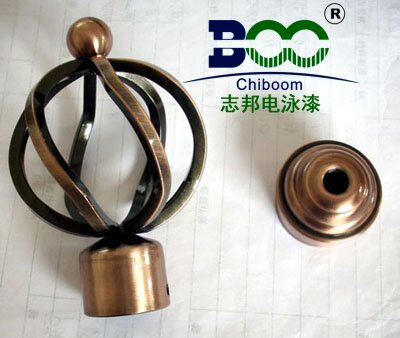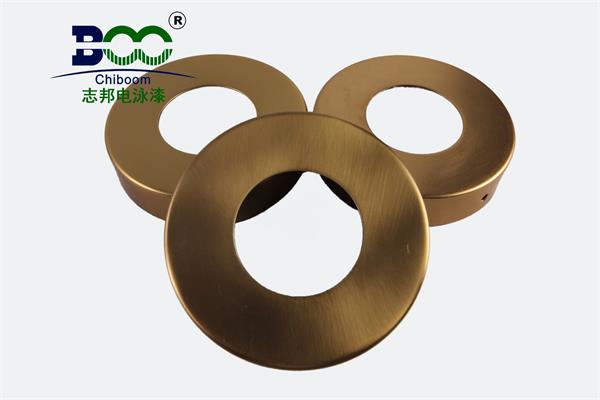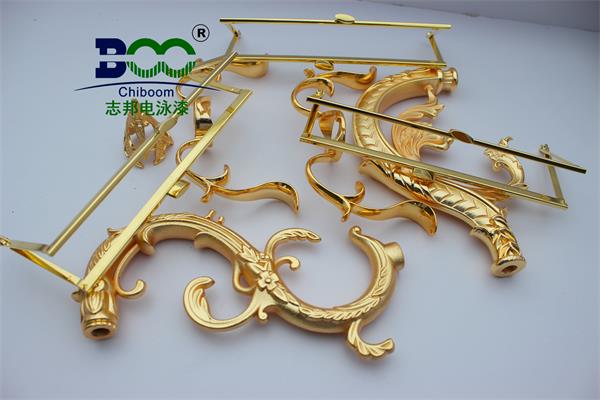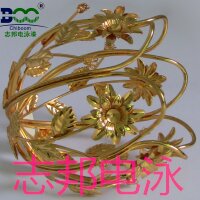How many types of electrophoretic paint are there?
In the rapid development of today's manufacturing industry, electrophoretic paint, as an efficient and environmentally friendly surface treatment technology, is gradually becoming a key component in enhancing product quality across various sectors. As the core material for electrophoretic coating, electrophoretic paint provides a solid corrosion protection barrier for products in numerous fields through its unique properties and diverse types. Recently, the types and application fields of electrophoretic paint have once again attracted widespread attention in the industry. Official authorities have released a series of latest interpretations on the classification and characteristics of electrophoretic paint, aiming to further promote its widespread application and technological innovation.
Electrophoretic paint, as the name implies, is a new type of paint that deposits coating particles on the surface of workpieces through electrophoretic action. It utilizes the principle of electrolysis to make coating particles move directionally under the action of an electric field force and deposit on the surface of the workpiece to form a uniform and dense paint film. The diverse types of electrophoretic paint are classified based on factors such as their different film-forming substances, resin types, and curing methods.
Currently, electrophoretic paint is mainly divided into two categories: anionic electrophoretic paint and cationic electrophoretic paint. Anionic electrophoretic paint, with anionic resins as the film-forming substance, has a wide range of applicability but relatively weaker corrosion resistance, mainly used for the protection of aluminum products. Cationic electrophoretic paint, with its excellent corrosion resistance, hardness, and chemical resistance, has become the most widely used type of electrophoretic paint. Cationic electrophoretic paint is further subdivided into epoxy resin cationic electrophoretic paint, acrylic cationic electrophoretic paint, and polyurethane cationic electrophoretic paint, each with its unique characteristics to meet the corrosion protection needs of products in different fields.

Epoxy resin cationic electrophoretic paint, with its superior salt spray resistance and deep-hole electrophoretic penetration, has become the preferred choice for automotive primers and electromechanical products. Acrylic cationic electrophoretic paint is renowned for its light-colored coating film, high gloss, and good gloss retention, widely used in metal eyeglass frames, hardware tools, and other products with high decorative requirements. Polyurethane cationic electrophoretic paint, with its best weather resistance, decorativeness, and corrosion resistance, is the preferred choice for high-end decorative topcoats, such as trophies, eyeglass frames, and crafts.
In addition, electrophoretic paint can also be classified into anionic electrophoretic paint and cationic electrophoretic paint based on the ion form of the film-forming substance in water; and single-component electrophoretic paint and two-component electrophoretic paint based on the water dispersion state. Two-component electrophoretic paint, consisting of a main agent and a curing agent, offers higher performance and broader adaptability, suitable for high-requirement industrial coatings such as automotive coatings and electrical coatings. Single-component electrophoretic paint is easy to use without adding a curing agent, but its performance is generally not as comprehensive as two-component electrophoretic paint, mainly used for general coating requirements such as architectural coatings and plastic coatings.
The diverse types of electrophoretic paint not only meet the corrosion protection needs of products in different fields but also drive the continuous upgrading of electrophoretic coating technology. With the rapid development of the manufacturing industry and increasingly stringent environmental requirements, the application fields of electrophoretic paint will become more extensive, and the technology will become more mature. In the future, the electrophoretic paint industry will continue to focus on technological innovation and product quality improvement, providing efficient and long-lasting coating solutions for more industries and jointly promoting the green and sustainable development of manufacturing.
This official interpretation of the types and characteristics of electrophoretic paint not only provides authoritative technical guidance for the industry but also lays a solid foundation for the widespread application and sustained development of electrophoretic paint technology. It is believed that in the near future, electrophoretic paint will become the preferred technology in the corrosion protection field of more industries, contributing even more to the enhancement of product quality and corrosion resistance.





 WeChat
WeChat